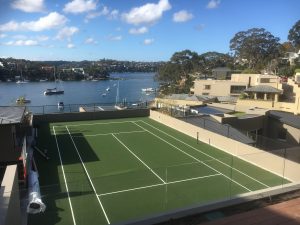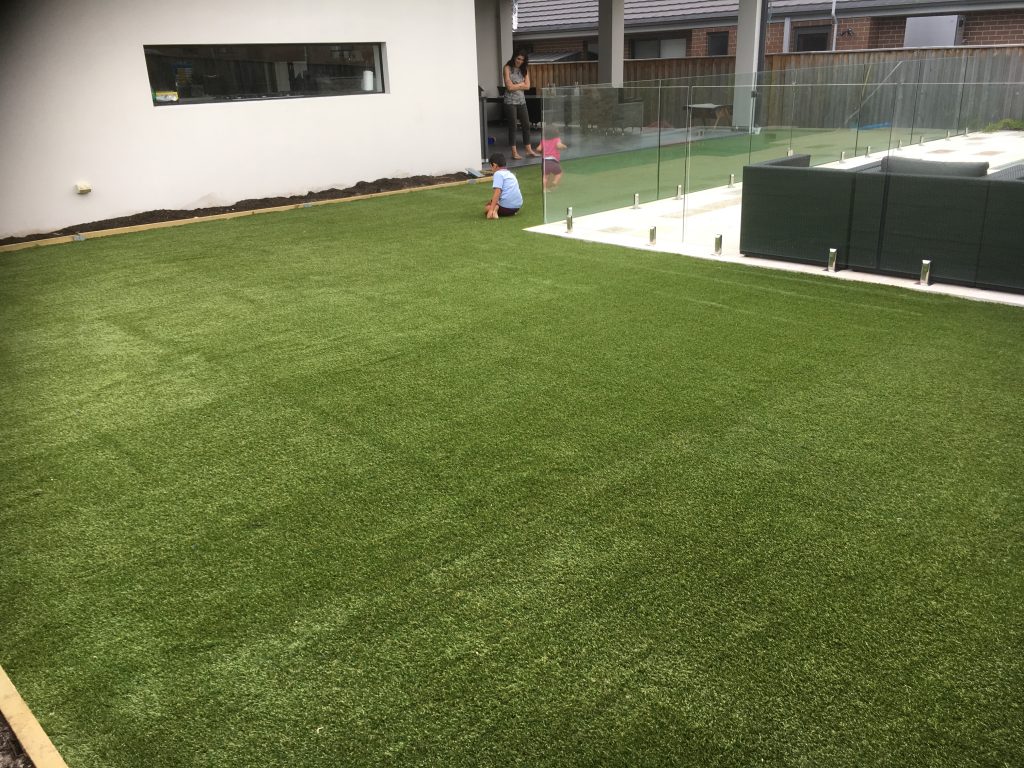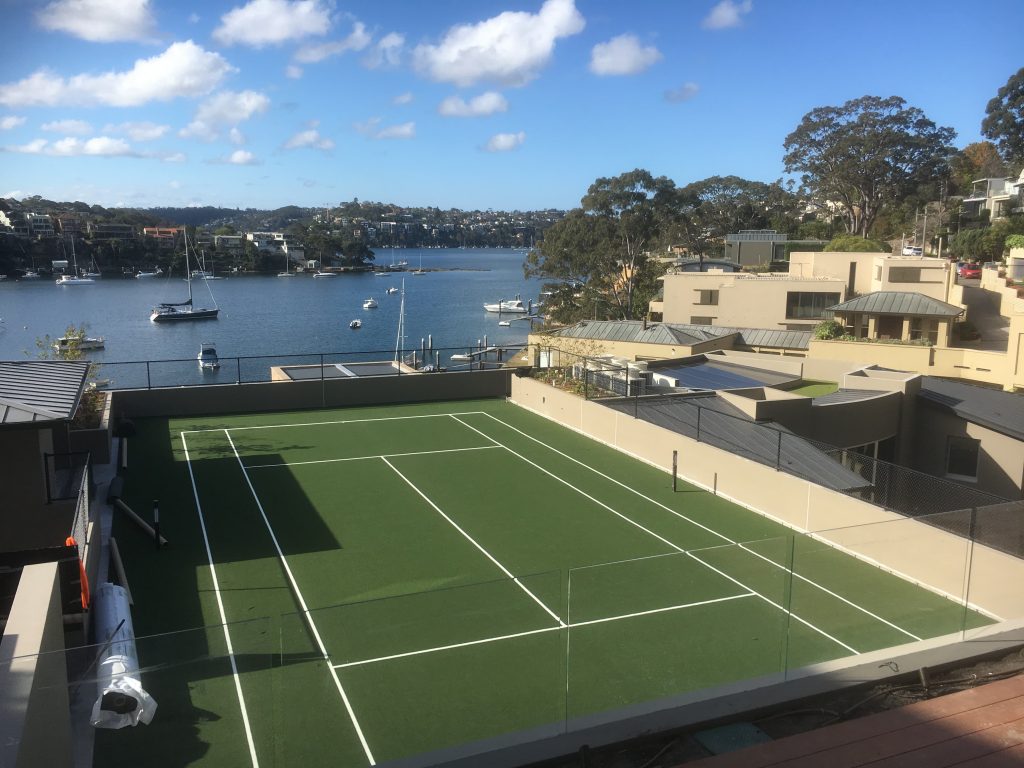What will it cost?
So, you’ve decided you want to build a residential tennis court. This is great, but you need to make sure the process is planned properly, and installed by a reputable licensed contractor.
Things that can affect your budget include where your court is being built – Is there a large cut to fill that may require retaining walls; What type of ground conditions it is being built on may affect the engineering of the slab; What surface you want for your court – synthetic grass or acrylic; Do you have appropriate lighting for those night tennis matches; if your local council will allow you to build a court in your backyard; and of course, labour and machinery access to build your court.
Synthetic Grass Courts

Full construction of a residential synthetic grass tennis court ranges from approximately $90,000 for a stabilised base and from $100,000 on concrete.
Acrylic Courts or Hard Courts
Full construction of a Residential Acrylic tennis court ranges from $90,000 – $120,000
Accessories
Some inclusions to make the most of your court may include – tennis posts and net, a basketball and or netball hoop, a “hit up” wall to practice against on your own; or even a traditional cabana or deck on the side may also be a great addition to your court. All items need to be considered in your total budget.
Additional
Lighting
Tennis court lighting has come a long way over the years, from traditional metal halide lights, to LED lights which provide high light levels on the court, uniformity of lighting across the court, and restricting excess light spillage outside the court in consideration for the environment – and your neighbours. Lighting will cost approx. $15,000.
Fencing
There are many types of fencing to consider and the most popular is the black PVC coated chainmesh. There are several types of ways to install your fencing, either all around, open on one side for viewing, or even retractable curtain netting which can be open or closed.
Frequently Asked Questions
There are quite a few things that need to be considered, so we created this guideline of the process, and considerations to be taken. You can also download this guide by clicking here.
Will it fit?
Tennis court playing dimensions are set at 23.77 metres long by 10.973 metres wide, however it is recommended to build a court no smaller than 30 metres by 15 metres. The ideal backyard or domestic tennis courts size is 33.5m x 16.2m. It is also best to design your tennis court layout with your other outdoor areas taken into consideration – e.g., pools, outdoor entertaining, and views to mention just a few. The best orientation of the tennis court is North/South to avoid morning and afternoon sun shining in your eyes.
What permissions do I need?
You may need to submit DA approval from your local council or you could fall into a complying, or exempt, development application. The construction of your tennis court will have to meet minimum standards of the Sports Contractors Association of Australia (SCA). Your local State Office can supply you with the construction guidelines as set out by the SCA, detailing minimum standards of construction.
The construction of your tennis court subbase is a civil engineering project, so we encourage obtaining a geotechnical investigation to advise on things like site classification, soil compaction, drainage and stability. This investigation can then be sent to a structural engineer for the design of the concrete slab, footings for lights and any retaining walls if required.
What Tennis Court Surface can I have?
The surface you choose for your residential tennis court will have an impact on the quality of the tennis you can play. Most popular now are synthetic playing surfaces, which have seen a rise in popularity over courts of natural grass and loose granular products (clay). There are a wide range of options available and each offers different playing conditions, so research the features and advantages of each surface available and find which will work best for you. Don’t forget to factor in ongoing maintenance of your court.
Synthetic Grass Courts represent around 70% of all tennis courts in Australia due to them being suited to all levels of play, and the comfort of a cushioned surface which is kind on the body. These courts are aesthetically pleasing to look at as well.
Acrylic Courts or Hard Courts are extremely versatile and are the easiest to maintain. They come in a wide variety of colours and can be cushioned with rubber or painted straight on concrete. This surface is suitable for basketball, skateboards, netball etc.
Don’t Forget Your Surroundings
Before installing your residential tennis court make sure the surrounding areas of your court have also been planned. Are you looking to install other entertainment areas to complement your new tennis court? A new pool perhaps? Now is the time to discuss these future plans to avoid problems arising later on.
Want to find out more? Contact us for all your information on installing your residential tennis court.



